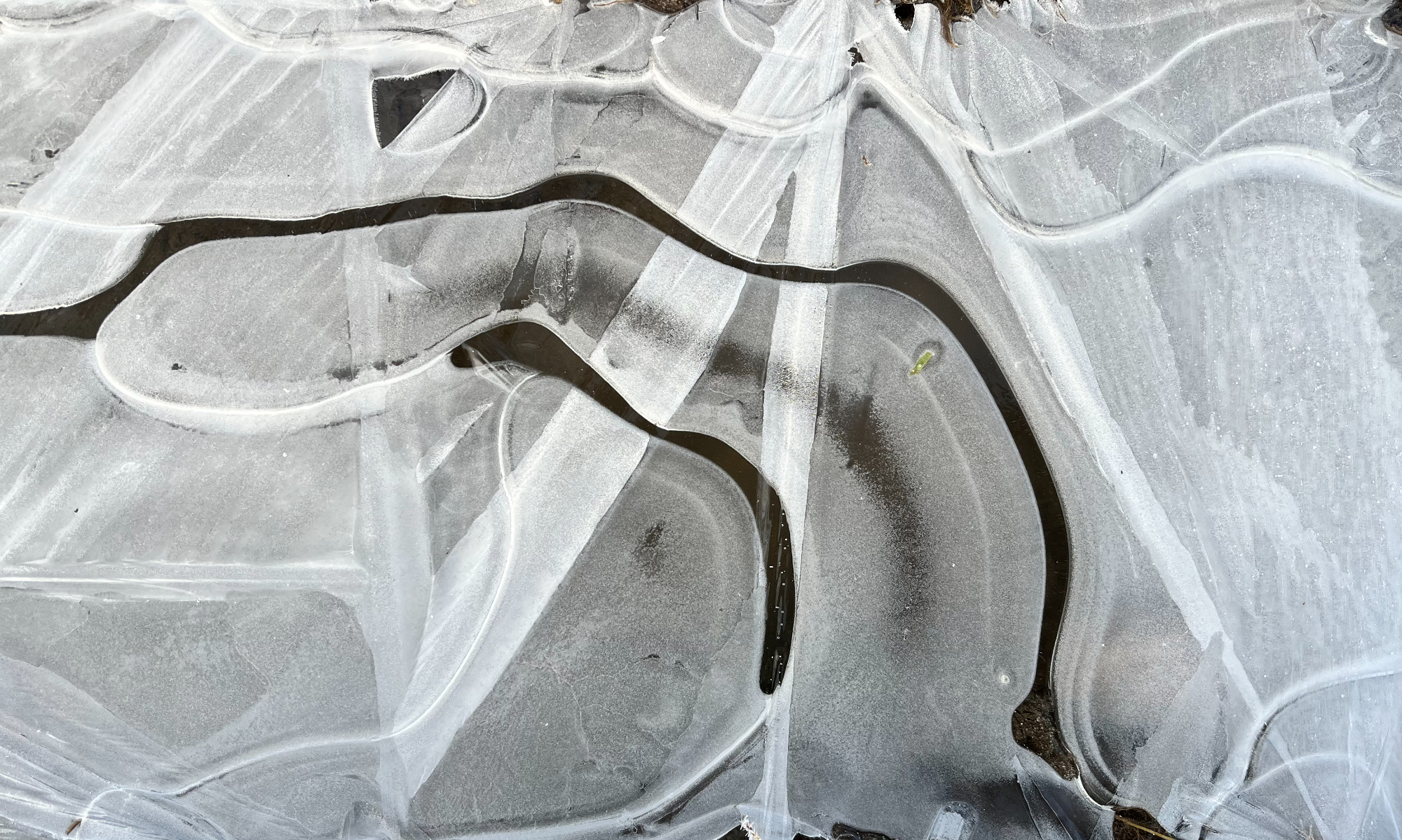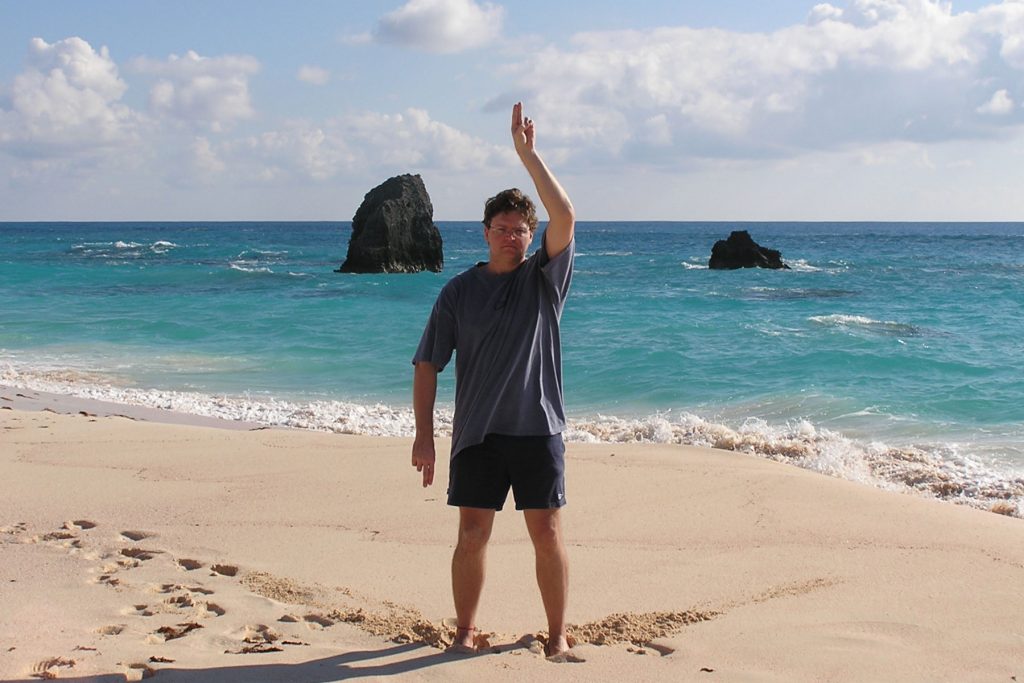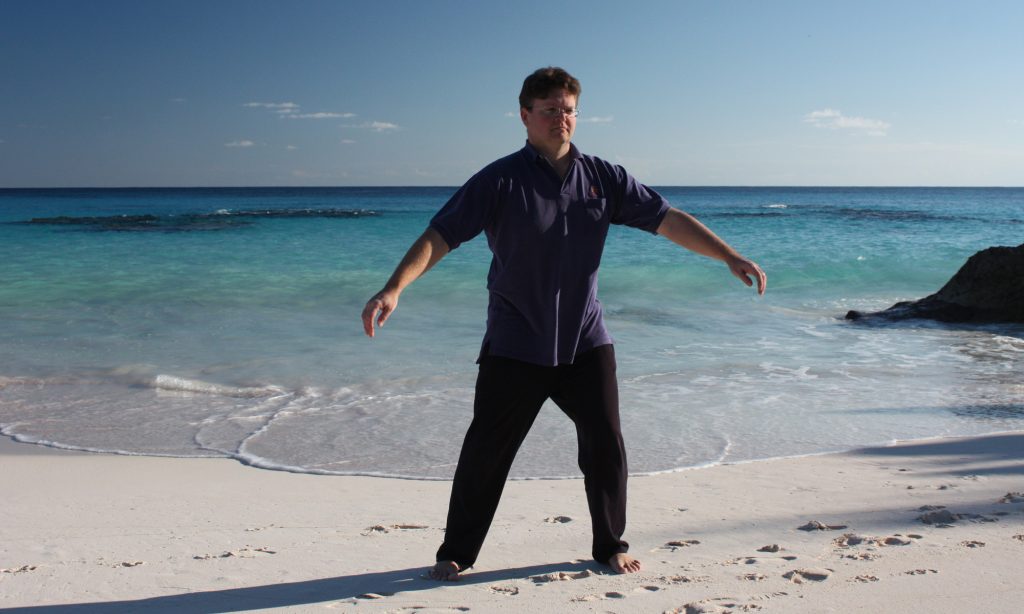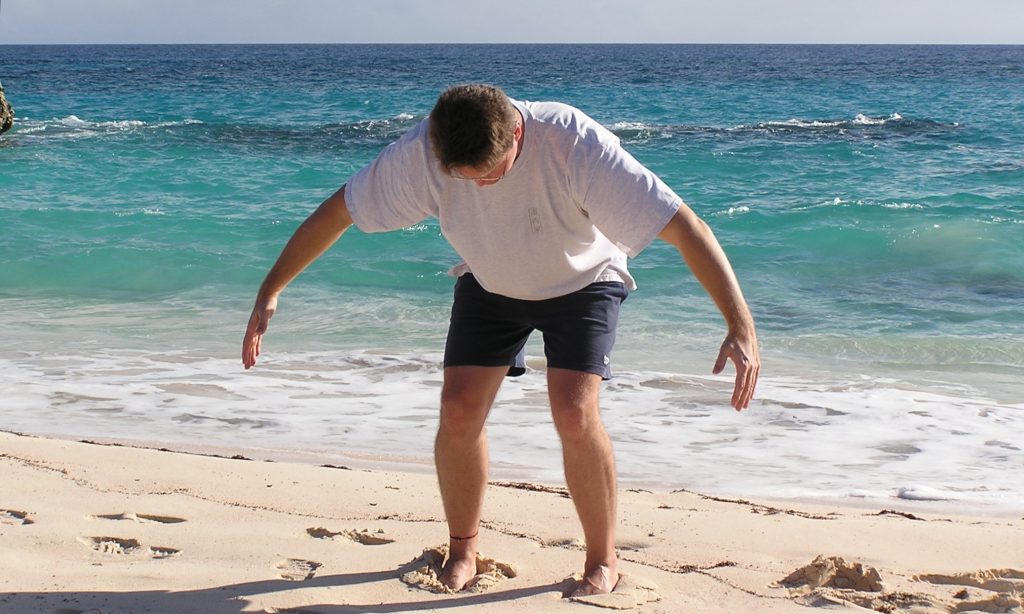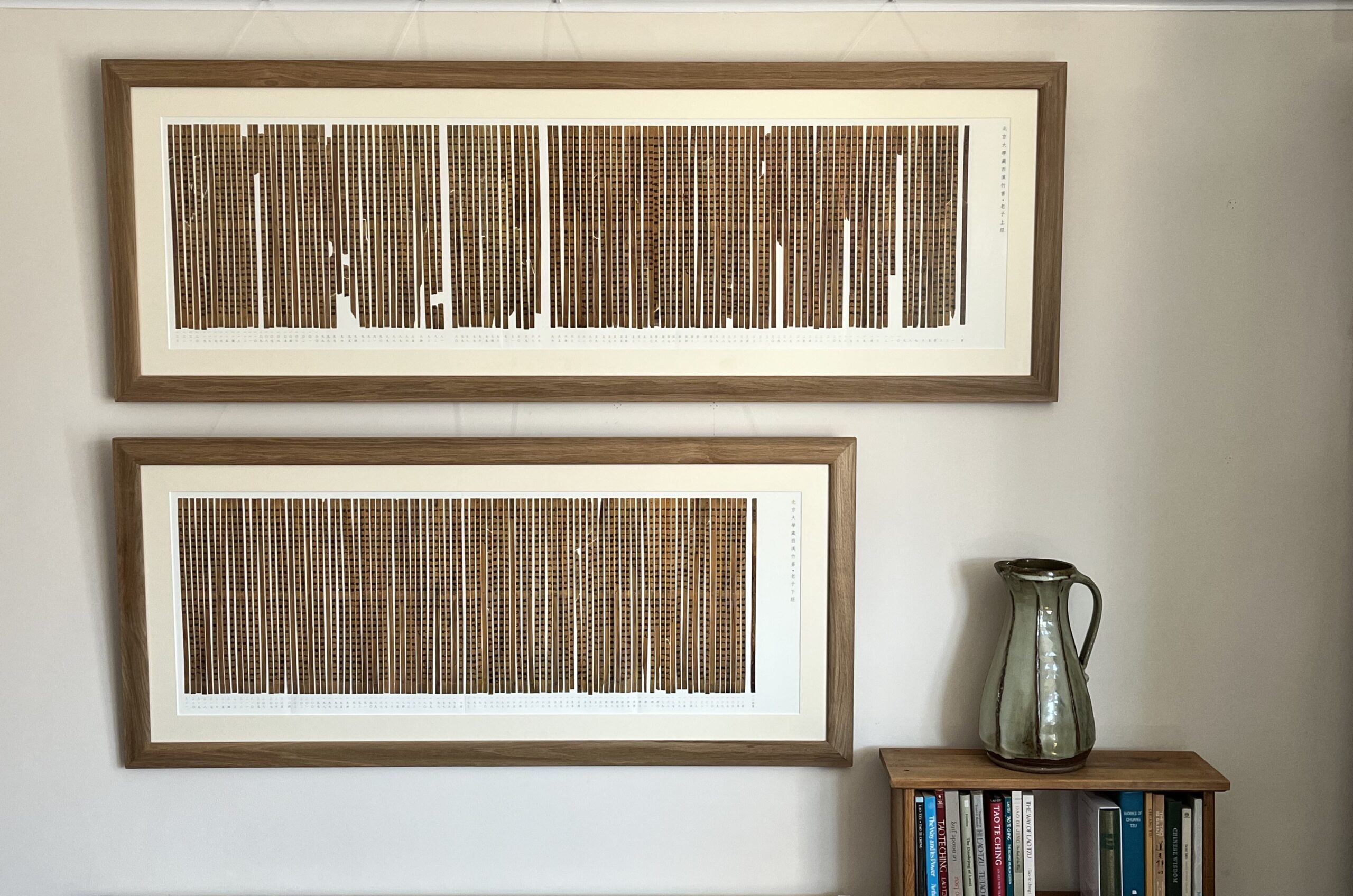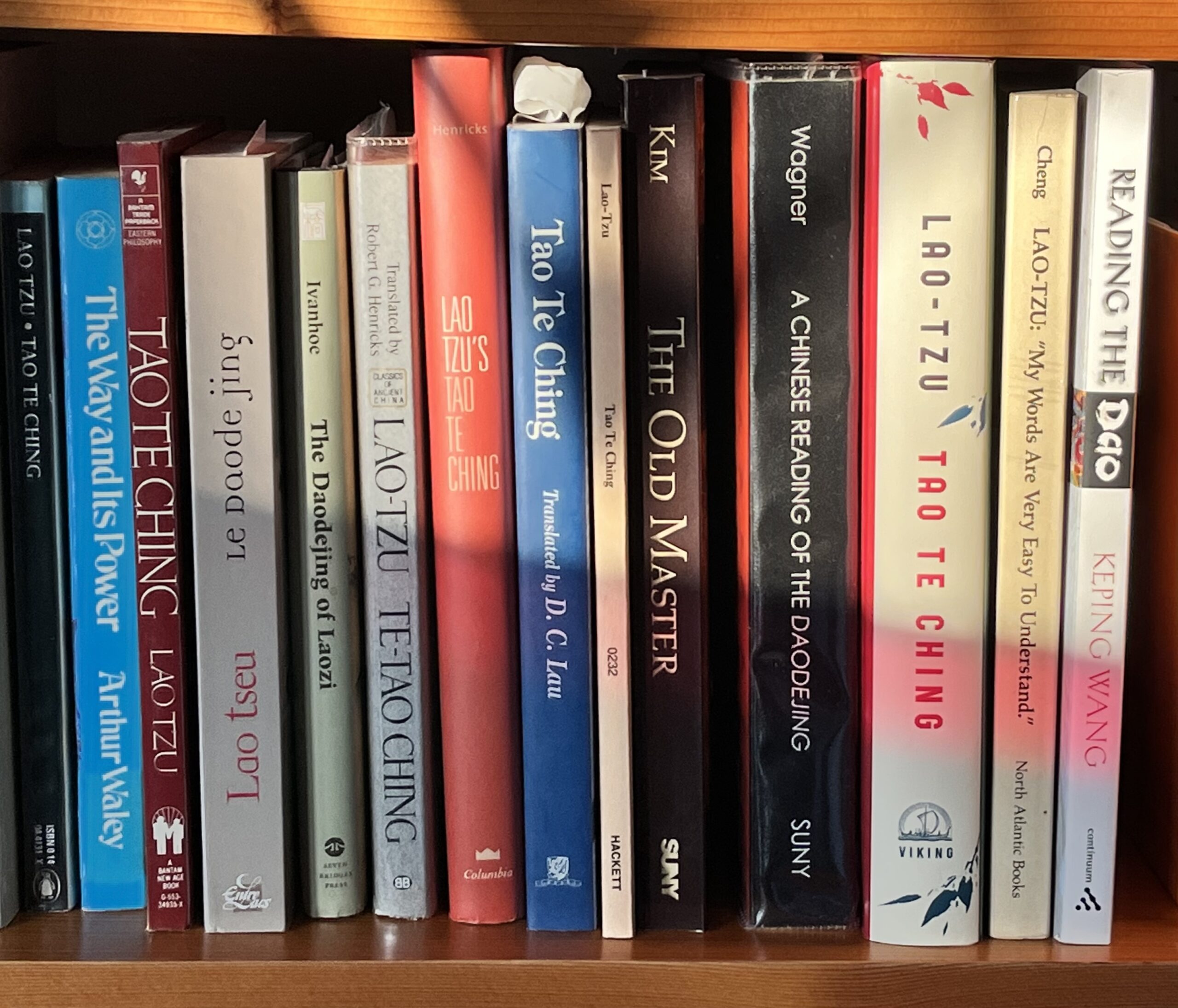There is an intriguing phrase in the Dazhuan, the Great Treatise, the largest of the ten ‘wings’, or primary commentaries, of the Yijing. It is about the nature of change. It reads:
Hua and cai are called bian.Dazhuan 1.12 化而裁之謂之變。
Translated directly it says:
Transformation and tailoring are called change.
The standard words for change in the Yijing are bian and hua. [The character Yi 易 also means ‘change,’ as well as ‘easy’ and ‘chameleon’.] As well as being used separately, they are often employed together as a cover-all term (bianhua) for all forms of change. While there is a great deal of overlap between the two, hua generally means ‘transformation’, the changing of one thing into another, whereas bian generally means the less permanent change associated with alteration and alternation, such as that of the seasons.
The phrase is interesting because it introduces a third, less common and seemingly more specific term: cai, which means ‘to cut out cloth’, ‘to make clothes’. Clearly, the ramifications of this use of cai require some exploration. From the basic meaning of ‘shaping cloth,’ [The cloth/clothing radical yī 衣 is embedded in the character 裁 cai.] cai came more generally to mean, ‘to fashion’, ‘to fit a pattern’, ‘to trim, pare, cut out’, and subsequently, ‘to regulate’. [The Analects uses cai in the sense of ‘to prune and shape’ behaviour (Analects 5.22). The Huainanzi uses cai in the sense of ‘to measure or judge the appropriate degree’ of something (Huainanzi 9.27 & 10.118). The Guanzi uses cai in the sense of ‘to fashion, to make’ (Guanzi《形勢解》3:34:13, 64/7b6 ), and in the sense of ‘adjust appropriately to’ (Guanzi《心術下》2:67.6). Xunzi uses cai in the sense of ‘to regulate’ (ICS Xunzi 9/39/12).]
Tailoring is about making and adjusting clothes to fit someone specific. When the Dazhuan says that ‘transformation and tailoring are called change,’ it is highlighting the importance of adapting to circumstances. ‘Change and transformation’ (bianhua) is not random. It is about adjusting very precisely to the present conditions, internal and external. [This is one of the many meanings of the phrase ‘neiwai xianghe’ 內外相合, meaning ‘the internal and external unite,’ from the Taiji Classics.] It is about finding the right fit, right here, right now.
If we consider the metaphor more closely, the paring away aspect of tailoring also resonates with the dropping away of all that is extraneous, which is so important in Daoist practice:
In practising Dao one loses daily.
Lose and lose until you arrive at not-doing
Not-doing, yet nothing is not done. [Laozi 48. See Study Not Studying.]
In this sense tailoring is about trimming away whatever does not allow a person to fully adapt and move with the current situation, whatever that may be. The answer to the question, ‘what is it that gets in the way of the ability to change in this way?’ is: whatever is not natural (ziran 自然, literally ‘self-so’).
One of the classic descriptions of adjusting to conditions is in the Zhuangzi. It is most likely the first recorded iteration of the now hackneyed slogan, ‘go with the flow’:
Confucius was at Luliang contemplating the water falling thirty ren (forty fathoms), its froth flowing for forty li (fourteen miles). Turtles, alligators, and fish could not swim there. He caught sight of a gentleman swimming there. Thinking that the man was bitter and wished to die, he sent his disciples down to the flow to rescue him. However, several hundred paces further down the man hopped out and leisurely strolled along the bottom of the bank, singing, with his hair draped like a blanket.
Confucius followed and spoke to him, saying, ‘I thought you were a ghost, but clearly you are a man. May I ask, do you have a special way of treading water? ’
The man answered: ‘No, I have no way. I started with what was familiar; I grew with what is natural to me; and am fulfilled with what has been man- dated (for me).’ I go in where it swirls together and get out where it rushes and tumbles everywhere, I go along with the way of water and do not do my own thing to it. This is how I tread it. [ICS Zhuangzi 19/51/27 – 19/52/1.]
The key terms come at the end of the passage, the swimmer ‘goes along with’ (cong 從) the way (dao 道) of water without any interference, without doing his ‘own thing’ (si 私) to it. [Si 私 means ‘personal’ or ‘private’.] He has no way of his own, he simply follows the way of the water. Not imposing one’s private agenda on the world is an important element of the Daoist understanding of naturalness (self-so-ness), which confers the ability to follow along with reality and by so doing remain healthy and whole.
It is precisely the ‘personal’, all of our likes and dislikes, our expectations, that get in the way of our perceiving reality as it is. It is only by seeing clearly that we can adjust to and go along with what is actually occurring.
What is so challenging to us is that this cutting away, this removal of what is not natural to us, is the removal of all the ‘personal’ desires and aversions that we mistakenly believe we are. It is only by going beyond the personal, beyond ‘yes’ and ‘no’, ‘like’ and ‘dislike’, that we can get out of our own way and properly become ourselves.
In the context of practising the internal arts, there are many ways of making adjustments to best suit external and internal conditions. For instance, externally, seasonal adjustments are crucial. There are at least three main ways to make them:
First, and most obviously, the size of our movements can be altered to suit the season. Everything being equal, our bodies are relatively more open in the spring and summer and more closed in the autumn and winter. If we make use of the middle – the 70% rule – the size of our stances will change as our ‘Goldilocks range’ naturally follows the seasons.
Second, within our forms, we may move our emphasis to the relevant element as the seasons change. A Taiji form done to accentuate the water element (kidneys, lü jin, absorption, fluidity – tong 通) in winter, will feel quite different to a wood element form (liver, peng jin, expansion, rising, springiness – tanxing 彈性) in spring. [And just to complete the list, fire element (heart, ji jin, projection, twisting and spiralling – zhuan 轉) in summer; metal element (lungs, an jin, compression, alignment – zheng 正) in autumn; earth element (spleen, zhongding, smoothness – shunli 順利) in long summer and throughout the year.]
Third, one might emphasise different neigong forms with the seasons: Fundamentals (Energy Gates) in the winter, Heaven and Earth in the spring, Spiralling Energy Body in the summer, Immortals Cloud Playing (Gods) in long summer and throughout the year, Bend the Bow in the autumn (Dragon and Tiger also works very well in the autumn, but since it is not as elemental it is not as seasonal). We should remember that, while seasonal adjustments are the general context for our practice, there are many, more subtle levels of change, such as that made for more immediate changes in the weather, for different times of the day, and even for different phases within one’s practice. For instance, exactly where we change from opening to closing through a particular movement in the form can change depending on what produces the optimal flow of energy (qitong 氣通) at that moment. Eventually bianhua can be manifested moment to moment.
Adapting our practice to the seasons is an effective way to tune back into the world around us. It allows us to move with the currents rather than being drowned by them. Returning to the world, becoming more present and being able to see what is in front of us as it is, is the much needed antidote to the hi-tech, distracted age of anxiety that we are presently living in.
Internally, there are three primary contexts that will transform the way we practise: health, the martial arts, and meditation. These three fundamental applications can and should interweave with the external adjustments that we make. Which is also part of ‘naiwai xianghe’.
Bruce, a natural fighter himself, reminds us regularly that, ‘not everyone wants to fight, but everyone wants to be healthy and strong’. The health applications of these arts apply to everyone and are the reason why the vast majority of people take them up in the first place. This being so, and since physical strength and stability are the foundation of the martial and spiritual applications of the internal arts, we’ll focus on health here. [For information on the martial side of the internal arts see: Frantzis, B. K., The Power of the Internal Martial Arts, revised edition (Berkeley: Blue Snake Books, 2007). For information on the spiritual side, the realm of Daoist shengong, see Frantzis, B.K., Relaxing Into Your Being (Berkeley: North Atlantic Books, 2002); Frantzis, B.K., The Great Stillness (Berkeley: North Atlantic Books, 2001); Frantzis, B.K., Tao of Letting Go: Meditation for Modern Living (Berkeley: Blue Snake Books, 2009).]
In terms of the body, one of the most important aspects of tailoring is that of the form itself. One’s form needs to fit one’s body and its specific capacities. This is the opposite of the ubiquitous ‘one size fits all’ approach to teaching forms, where people try to force their bodies into a stylised configuration, usually that of a specific master. What is forgotten with such stylisation is that the master’s form is correct for his or her particular body and skills. This is why different masters develop different looking forms. For instance, Wu Jianquan had an extraordinarily open body and was particularly skilled at throws, and both were reflected in his Taiji form.
Tailoring the form in this way does not mean that anything goes, one cannot just do one’s own thing, but within any form there is far more possible variation than most practitioners realise. Taiji is an embodiment of certain principles, not an external shape.
An important aspect of realising the nature of change and transformation is that it can help us let go of the desire for perfection, and the inevitable frustration that accompanies it when we never get it ‘right’. In a world of constant flux, how can there be a single, perfect configuration that holds true for all time? Doing a form correctly means getting as much neigong working as possible, given our present level of integration, here and now. It will be different tomorrow.
Beyond fitting the form to one’s capacities, particular health conditions require additional modifications. Doing a form generally for health will not necessarily be the same as doing it for a specific ailment, although there is likely to be a great deal of overlap. The way one does the form to tonify or heal an internal organ, for instance, is not precisely the same way that one does it for improving blood flow, or healing joints, or nerves.
Transformation and tailoring are called change, and change is the way that we constantly adjust and pare away what would otherwise get in our way. Change is the ability to go along with reality, with that which is so-of-itself. The internal arts are essentially bianhua practices. They teach us how to change and transform along with circumstances. Initially, the tailoring is physical: how to move from one position to another without getting stuck. Gradually our practices show us how to change in ever more subtle ways.
If we learn to tailor change we can be like the swimmer at Luliang, leisurely strolling next to the turbulent rapids that he has just effortlessly negotiated.
Text and translations © Matthew Brewer, Daoist Internal Arts, 2017.
